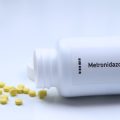1. Understanding the Link Between Sunscreen and Breakouts
For those with acne-prone skin, finding the right sunscreen can feel like a challenge. While sunscreen is essential for protecting your skin from harmful UV rays, certain ingredients can clog pores and trigger breakouts. Understanding what to look for in a sunscreen formula can help you stay protected without worsening acne.
How Sunscreen Can Contribute to Breakouts
Not all sunscreens are created equal—some contain ingredients that may be too heavy or occlusive for acne-prone skin. Here are a few common culprits:
| Ingredient | Why It Can Cause Breakouts |
|---|---|
| Oils (e.g., coconut oil, mineral oil) | Can clog pores and lead to increased sebum production. |
| Silicones (e.g., dimethicone) | Create a barrier on the skin that may trap bacteria and oil. |
| Chemical UV Filters (e.g., oxybenzone, avobenzone) | May cause irritation and inflammation, which can worsen acne. |
| Fragrances & Preservatives | Can trigger sensitivity and inflammation in acne-prone skin. |
The Importance of Choosing the Right Formula
If you have acne-prone skin, selecting a sunscreen labeled as “non-comedogenic” is key. This means the product is specifically formulated not to clog pores. Additionally, opting for lightweight, oil-free, or gel-based sunscreens can reduce the risk of breakouts while still providing effective sun protection.
Sunscreen Types: Physical vs. Chemical
Sunscreens generally fall into two categories: physical (mineral) and chemical. Understanding their differences can help you make an informed choice.
| Sunscreen Type | Main Ingredients | Pros for Acne-Prone Skin |
|---|---|---|
| Physical (Mineral) Sunscreens | Zinc Oxide, Titanium Dioxide | – Less likely to cause irritation – Sits on top of the skin rather than being absorbed – Offers broad-spectrum protection without clogging pores |
| Chemical Sunscreens | Oxybenzone, Avobenzone, Octinoxate | – Lightweight formulas available – Absorbs UV rays effectively – Some formulations may irritate sensitive or acne-prone skin |
Tips for Using Sunscreen Without Causing Breakouts
- Avoid heavy or greasy formulations: Look for lightweight gels or fluids that absorb quickly into the skin.
- Pore-friendly ingredients: Choose sunscreens with zinc oxide or titanium dioxide, which are less likely to clog pores.
- No fragrances or alcohol: Fragrance-free and alcohol-free options reduce irritation and inflammation.
- Cleansing is crucial: Wash off sunscreen thoroughly at the end of the day to prevent buildup that could lead to breakouts.
Selecting the right sunscreen doesn’t have to be complicated. By understanding how different ingredients affect acne-prone skin, you can find a formula that keeps your skin protected without triggering breakouts.
2. Key Ingredients to Look for (and Avoid)
Choosing the right sunscreen for acne-prone skin can make a huge difference in preventing breakouts while keeping your skin protected. The key is to look for non-comedogenic formulas that won’t clog pores and to avoid ingredients that may trigger irritation or excess oil production.
Best Sunscreen Ingredients for Acne-Prone Skin
If you have acne-prone skin, opt for sunscreens with lightweight, oil-free, and non-comedogenic ingredients. Here are some of the best options:
| Ingredient | Benefits |
|---|---|
| Zinc Oxide | A mineral sunscreen ingredient that provides broad-spectrum protection while soothing inflammation and redness. |
| Titanium Dioxide | A gentle physical blocker that sits on top of the skin without clogging pores, making it ideal for sensitive and acne-prone skin. |
| Niacinamide | An anti-inflammatory ingredient that helps regulate oil production and reduce redness associated with breakouts. |
| Hyaluronic Acid | Keeps skin hydrated without adding excess oil, helping to maintain a healthy moisture balance. |
| Silica | A mattifying agent that absorbs excess oil and reduces shine, making it great for oily and acne-prone skin types. |
Sunscreen Ingredients That May Cause Breakouts
Certain sunscreen ingredients can be too heavy or irritating for acne-prone skin. If you’re prone to breakouts, try to avoid the following:
| Ingredient | Why to Avoid It |
|---|---|
| Coconut Oil (or other heavy oils) | Tends to clog pores and may lead to breakouts, especially for oily skin types. |
| Oxybenzone & Octinoxate | Chemical UV filters that can be irritating and may disrupt hormones in sensitive individuals. |
| Fragrances & Essential Oils | Additives like perfumes or citrus oils can cause irritation and trigger breakouts. |
| Sodium Lauryl Sulfate (SLS) | A foaming agent that can strip the skin’s natural barrier, leading to dryness and increased oil production. |
| Dense Silicones (e.g., Dimethicone in high concentrations) | Makes products feel smooth but can trap dirt and oil, leading to clogged pores if not properly removed. |
How to Choose the Right Sunscreen Formula
The best sunscreen for acne-prone skin should be labeled as “non-comedogenic,” meaning it won’t block pores. Look for lightweight gels, fluids, or matte-finish lotions instead of thick creams. Additionally, mineral-based sunscreens with zinc oxide or titanium dioxide are often better tolerated than chemical sunscreens.
Pro Tip: Patch Test First!
If youre trying a new sunscreen, do a patch test on a small area of your face before applying it fully. This way, you can see how your skin reacts before committing to daily use.
The Bottom Line on Ingredients
Selecting the right sunscreen ingredients can help protect your skin from UV damage without causing unwanted breakouts. By choosing non-comedogenic formulas with gentle minerals and avoiding pore-clogging additives, you can keep your skin clear while staying sun-safe.
![]()
3. Best Sunscreen Types for Acne-Prone Skin
Choosing the right sunscreen is crucial for protecting your skin without triggering breakouts. For acne-prone skin, its important to consider whether a mineral or chemical sunscreen works best for you. Let’s compare their benefits and explore lightweight, oil-free options that help keep your skin clear.
Mineral vs. Chemical Sunscreens: Which One Is Better?
Both mineral and chemical sunscreens offer effective UV protection, but they work differently on the skin. Here’s a quick comparison:
| Sunscreen Type | How It Works | Benefits for Acne-Prone Skin |
|---|---|---|
| Mineral (Physical) Sunscreen | Sits on top of the skin and reflects UV rays. | – Less likely to clog pores – Provides immediate protection – Soothes sensitive or irritated skin |
| Chemical Sunscreen | Absorbs UV rays and converts them into heat. | – Lightweight and easy to blend – Water-resistant options available – Suitable for all-day wear |
The Best Sunscreens for Acne-Prone Skin
If you have acne-prone skin, look for sunscreens labeled “non-comedogenic,” meaning they won’t clog pores. Here are some key features to consider:
- Oil-Free Formulas: Avoid heavy, greasy sunscreens that can contribute to breakouts.
- Lightweight Texture: Gel-based or fluid sunscreens absorb quickly without leaving residue.
- Zinc Oxide or Titanium Dioxide: These mineral ingredients provide gentle sun protection with minimal irritation.
- No Added Fragrance: Fragrances can irritate sensitive, acne-prone skin.
- Broad-Spectrum Protection: Choose SPF 30 or higher to shield against both UVA and UVB rays.
Trouble-Free Application Tips
The way you apply sunscreen can also impact your skin’s health. Follow these tips to minimize potential irritation:
- Avoid Heavy Layering: Use a thin, even layer to prevent clogged pores.
- Cleansing Before Reapplying: If youre reapplying sunscreen throughout the day, gently cleanse your face first if possible.
- Select Makeup with SPF: If layering multiple products, opt for foundations or powders with built-in sun protection.
Selecting the right sunscreen doesn’t have to be overwhelming. By choosing non-comedogenic, lightweight formulas suited for acne-prone skin, you can stay protected without worrying about breakouts.
4. Application Tips to Minimize Breakouts
Applying sunscreen the right way is just as important as choosing the right formula. If you have acne-prone skin, using sunscreen incorrectly can lead to clogged pores and breakouts. Follow these expert tips to stay protected while keeping your skin clear.
Layering Sunscreen with Skincare
The order in which you apply your skincare products matters. Proper layering ensures that your sunscreen works effectively without interfering with other products.
| Step | Product Type | Application Tip |
|---|---|---|
| 1 | Cleanser | Use a gentle, non-comedogenic cleanser to remove excess oil and impurities. |
| 2 | Toner (Optional) | If using a toner, choose an alcohol-free formula to avoid drying out your skin. |
| 3 | Treatment (Serum/Acne Medication) | Apply lightweight serums or acne treatments before moisturizer. |
| 4 | Moisurizer | Select an oil-free, non-comedogenic moisturizer to keep skin hydrated. |
| 5 | Sunscreen | The final step in your routine. Apply generously and allow it to absorb fully. |
| *If using makeup, apply it after sunscreen has settled for a few minutes. | ||
Selecting the Right Amount of Sunscreen
Avoiding breakouts isnt just about choosing the right sunscreen—it’s also about applying the correct amount. Too little won’t protect your skin, while too much may feel greasy and clog pores.
The Two-Finger Rule
A general guideline is to use two finger-lengths of sunscreen for your face and neck. This ensures you get full protection without overloading your skin.
Tapping Instead of Rubbing
If your sunscreen feels heavy or greasy, try patting it onto your skin instead of rubbing it in. This technique helps prevent excessive product buildup that could contribute to clogged pores.
Avoid Common Application Mistakes
- Skipping reapplication: Sunscreen should be reapplied every two hours, especially if youre outdoors or sweating.
- Mixing with moisturizer: Mixing sunscreen with other products can dilute its effectiveness—apply it separately instead.
- Applying too little: Using less than the recommended amount reduces sun protection and increases the risk of sun damage.
- Irritating ingredients: Avoid sunscreens with alcohol, fragrances, or heavy oils that can trigger breakouts.
The key to avoiding acne breakouts while wearing sunscreen is finding a balance between protection and lightweight coverage. By following these application techniques, you can maintain clear skin while keeping it safe from UV damage.
5. Post-Sunscreen Skincare Routine
After a long day of wearing sunscreen, its crucial to cleanse your skin properly to prevent clogged pores and breakouts. Sunscreen, especially water-resistant or mineral-based formulas, can leave residue on your skin that may contribute to acne if not removed thoroughly.
Step 1: Double Cleansing for a Deep Clean
Double cleansing is an excellent way to ensure all traces of sunscreen, sweat, and excess oil are removed without stripping your skins natural moisture.
| Step | Product Type | Why It Helps |
|---|---|---|
| First Cleanse | Oil-based cleanser or micellar water | Dissolves sunscreen, makeup, and excess sebum |
| Second Cleanse | Gentle foaming or gel cleanser | Removes any remaining residue while keeping skin balanced |
Step 2: Use a Lightweight Exfoliant (If Needed)
If your skin tends to get congested easily, using a mild chemical exfoliant (like salicylic acid) a few times a week can help keep your pores clear. Avoid harsh scrubs that may irritate acne-prone skin.
Step 3: Hydrate & Soothe Your Skin
Sunscreen use and cleansing can sometimes leave your skin feeling dry. Apply a lightweight, non-comedogenic moisturizer with soothing ingredients like niacinamide or aloe vera to maintain hydration without clogging pores.
Step 4: Spot Treatment for Acne-Prone Areas
If youre dealing with active breakouts, apply a targeted acne treatment with ingredients like benzoyl peroxide or tea tree oil after moisturizing. This helps calm inflammation and prevent future blemishes.
The Key to Clear Skin: Consistency
Cleansing your skin properly after sunscreen use is essential in preventing breakouts. By following a gentle yet effective post-sunscreen skincare routine daily, you can keep your pores clear while protecting your skin from sun damage.

